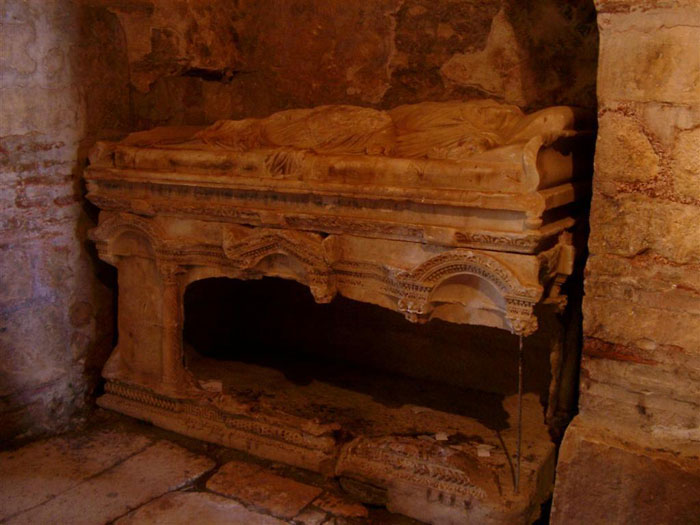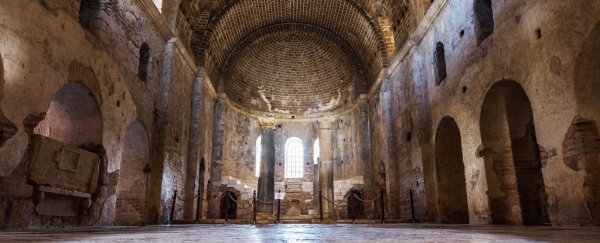Despite what you may have heard, Santa Claus is – or was – real, and archaeologists in Turkey think they've pinpointed the location of his final resting place.
Centuries before the jolly red mascot became a fixture of Christmas consumerism, Saint Nicholas was a 4th century bishop who inspired the modern Santa myth – and new claims suggest the grave of this gift-giving churchman lies beneath an ancient church in southern Turkey.
After three months of investigations, Turkish archaeologists say they've discovered what looks like an intact temple and burial grounds underneath Saint Nicholas Church in the province of Antalya, in a town called Demre – formerly known as Myra, where Saint Nicholas was made bishop.
It's thought that this undisturbed tomb, if that's what it truly is, could be where the revered saint was laid to rest.
"The temple on the ground of the church is in good condition," the director of surveying and monuments in Antalya, Cemil Karabayram, told Turkish newspaper Hürriyet Daily News.
"We believe that it has received no damage so far. But it is hard to enter it because there are stones with motifs on the ground. These stones should be scaled one by one and then removed."
If the archaeologists are right, it could mean the history books will need some updating.
It has been traditionally thought that Saint Nicholas's remains had been transported to the city of Bari in Italy by Italian merchants in 1087, some 700 years after his death.
According to that interpretation, the sailors smuggled or stole his bones to preserve them during a period when the town was under frequent attacks by Seljuk Turks.
These conflicts resulted in the church being demolished and rebuilt, which is when the remains are thought to have been taken from Saint Nicholas's grave, despite the objections of Greek Orthodox monks.
But if this is what took place, it's possible the traders may not have retrieved all the bones, as other relics are thought to have ended up in Venice and elsewhere.
 Sjoehest/Wikimedia/CC BY-SA 3.0
Sjoehest/Wikimedia/CC BY-SA 3.0
According to the current researchers' hypothesis, none of these bones belonged to Saint Nicholas, however – as the grave they were taken from (pictured above) was not his, but that of another anonymous priest buried in the church.
Documents studied by the team suggest that Saint Nicholas instead was buried in an untouched chamber that lies underneath the church, which the researchers claim to have detected using a CT scanner and ground-penetrating radar.
Several mosaics in the church's stonework make accessing this section difficult, but the researchers are hopeful that future excavations will prove their discovery is legitimate.
"We have obtained very good results but real works start now," Karabayram said.
"We will reach the ground and maybe we will find the untouched body of Saint Nicholas."
Of course, until further investigations are carried out, the claims remain unsubstantiated, and some at least have their doubts.
"This speculation is very premature," Carol Meyers, who runs an organisation dedicated to Saint Nicholas's legacy, told National Geographic.
"If relics are found, they would need to be dated and examined by international experts. The Turks, of course, are very interested in promoting tourism."
That last point is definitely something to consider. The researchers themselves acknowledge that the discovery could have massive potential for Turkish tourism, and Demre already benefits from its lucrative association with the saint.
"We are so happy with Saint Nicholas," Demre-based shopkeeper Baris Yuksel explained to CNN back in 2010.
"After lots of centuries we are earning money thanks to Saint Nicholas."
Only more digging will be able to tell us if there's more to these claims, but as far as Karabayram believes, Santa Claus is very, very real.
"The world's eyes will be set on here," he told Hürriyet Daily News.
"We claim that St. Nicholas has been kept in this temple without any damage. We are at the last stage."
